Is 315 lbs A Good Squat: Decoding Gym Benchmarks
Author:
Reviewed by:
(21 years of Oly Lifting experience)
Unlock your full potential by engaging with our experts and community! Have questions about your fitness journey or looking for expert advice on weightlifting techniques? Don’t hesitate — leave a comment below and Sergii Putsov will provide a personalized answer and insights to help you reach your goals.
Torokhtiy is reader-supported. Some links are affiliate links, and we may earn a commission at no extra cost to you. See our disclosure page for details.
Squatting is more than just an exercise. It’s a fundamental movement that it’s essential for building strength, improvement, flexibility, and enhancing overall athletic performance. As practitioners progress, lifting heavier weights becomes a testament to their development, and certain benchmarks are set to gauge their strength levels.
Among these, squatting 315 lbs stands out as a significant milestone. It’s a weight that resonates across gym cultures, representing a transition from intermediate to advanced strength levels. Hitting this mark is not just about bragging rights, it signifies a well-earned achievement in one`s fitness journey, reflecting dedication to training, technique, and tenacity.
So is 315 lbs a good squat measure of strength and performance? The comprehensive answer is in the article below!
Is 315 lbs a good squat? Yes, it is an impressive benchmark, indicative of advanced strength and commitment to training. It’s a goal that many aspire to in the fitness community.
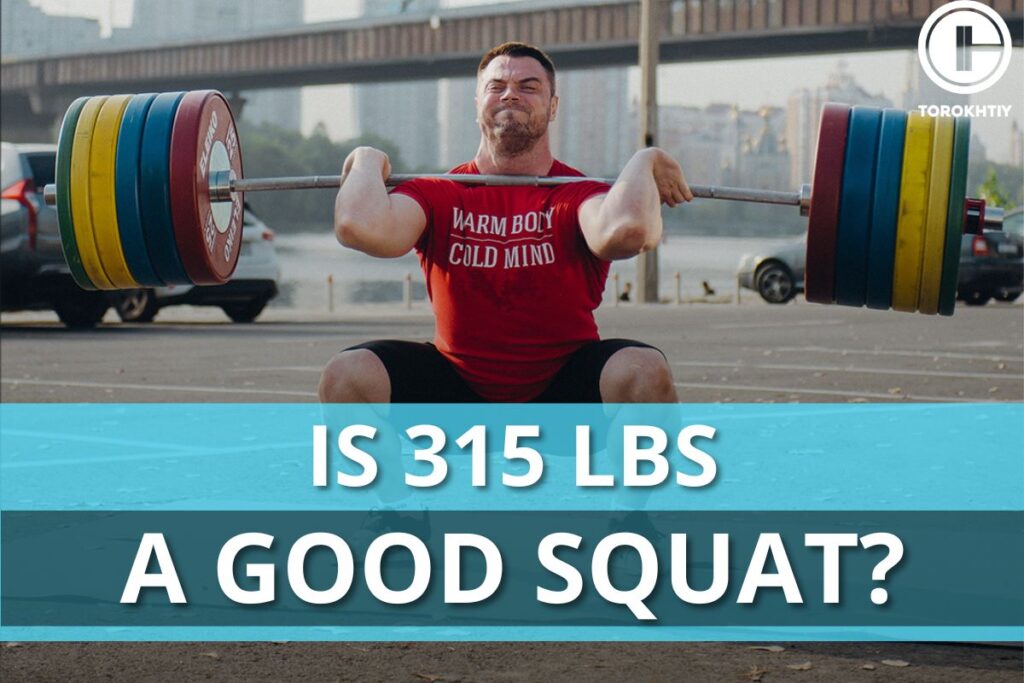
Who Can Squat 315 Lbs?
The 315-pound squat is a weightlifting milestone that carries substantial significance in the strength training community. This specific number isn’t arbitrary, it equates to three 45-pound plates on each side of the standard 45-pound barbell and physical testament to a lifter’s progress in strength. In many gyms, the clank of these plates is a sign of respect, a nod to an individual`s dedication and capability.
This benchmark is particularly noteworthy, because it exceeds the realm of casual fitness. It often separates serious litters from those who maintain strength training as a facet of a broader fitness routine.
Training To Squat 315 lbs: A Realistic Timeline
How long does it take to squat 315 lbs? The journey to this result is unique for each individual with the timeline based on several key factors:
1. Start Strength
An individual starting with the baseline squat of 135 lbs might set a goal to reach 315 lbs within 18-24 months, while someone starting at 225 lbs might achieve it in 6-12 months.
2. Training Frequency
More frequent training ideally 2-4 times per week allows for quicker neuromuscular adaptations and strength gains.
3. Nutrition
Adequate protein, intake, balanced macronutrients and caloric intake that supports muscle growth are essential.
4. Genetics
Genetic predispositions affect muscle composition and recovery rates influencing high quickly strength can be gained.
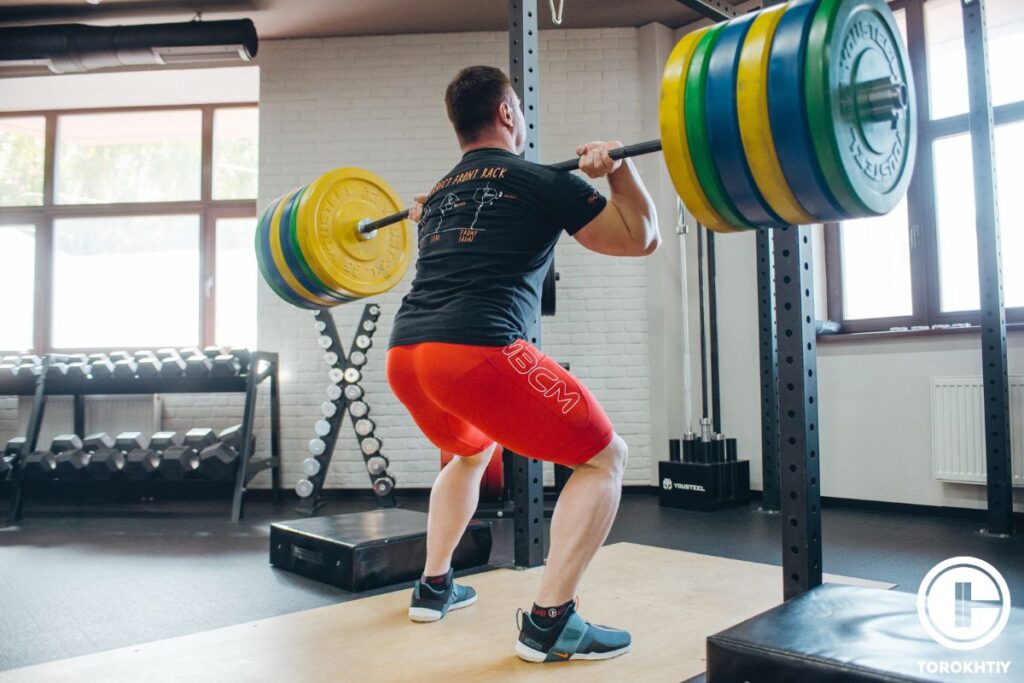
5. Lifestyle Factors
Sleeping quality, stress levels, and overall lifestyle choices can significantly impact recovery and performance.
6 Essential Training Principles
To increase squat strength, especially when aiming for significant weights like 315 pounds certain training principles are non negotiable:
Follow us!

Free!
Get a 2-week Weightlifting Program as a bonus for the subscription to kickstart your training plan!

Free!
1. Progressive Overload
Gradually increasing the stimulus is crucial. This can be achieved by adding weight, increasing or enhancing intensity.
2. Proper Form and Technique
Mastery of squat mechanics not only prevents injury, but also ensures the most efficient use of energy and muscle engagement.
3. Periodization
Structuring training in cycles that build towards big strength while allowing for recovery helps avoid plateau and over training.
🔻GET A FREE PROGRAM DEMO: 12 Week Squat Program by Oleksiy Torokhtiy
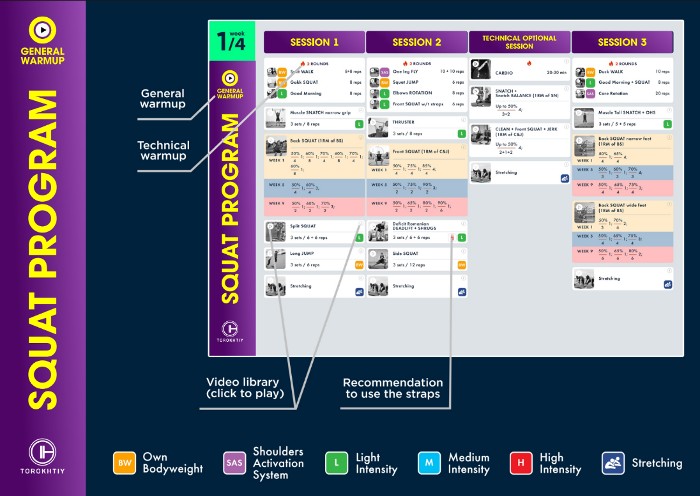
Do you want to double your squat strength? In just 12 weeks, you’ll be able to boost your squat results.
Enter your details and get a free demo (1 free week) of the squat program straight into your inbox.
4. Accessory Exercises
Incorporating movements that strengthen the posture, chain core and stabilizing muscles will contribute to a stronger squat.
5. Rest and Recovery
Adequate rest between squat sessions and proper sleep, vital for muscle repair and growth.
6. Mental Preparation
Building mental fortitude and focusing on goal setting can help rush, push through challenging training sessions.
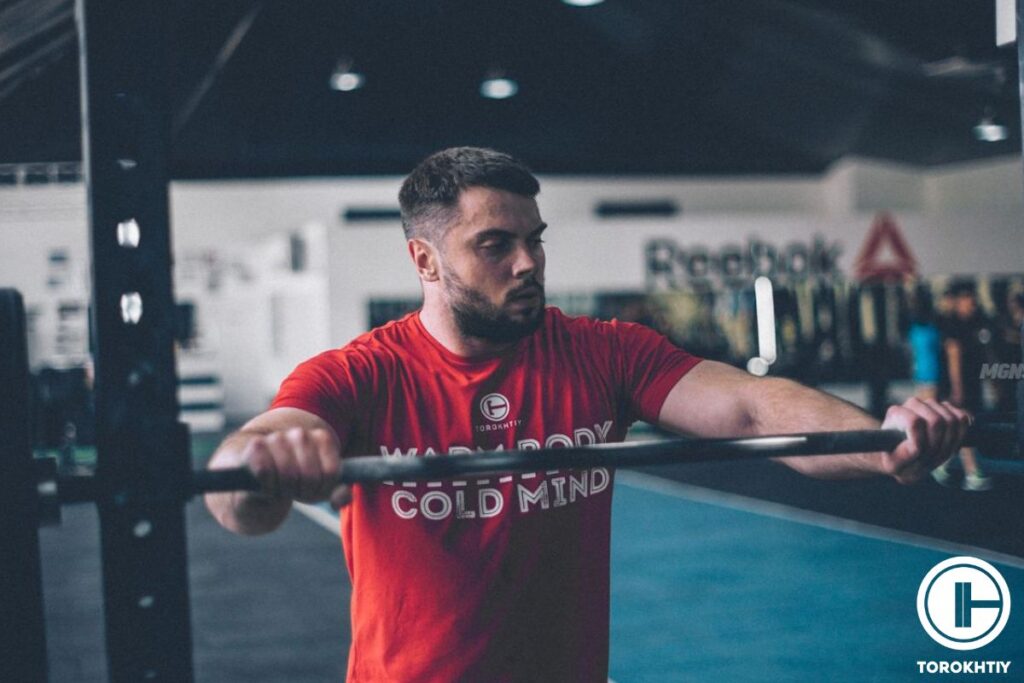
Implementing these principles into a training program can help create the foundation for reaching the 315 lbs squat milestone. It’s a blend of science, discipline and mental resilience that propels lifters towards achieving the formidable strength goal.
A Basic Training Plan To Progress Towards At 315 lbs Squat
Weeks 1-4: Foundation Building
- Frequency: squat twice a week
- Volume: 3 sets of 8-10 reps at the moderate weight to focus on form.
- Add deadlift and leg press to build overall leg strength.
- Accessory exercises: leg curls, calf rises and core work.
- Intensity management: start with the weight that allows you to complete all sets with good form, but is challenging in the last reps.
- Milestone: achieve consistent form and control with moderate weights.
Training Day Example
- Warm-up*: 10 minutes of dynamic stretching focusing on the lower body.
- Squat: 3 sets of 10 reps at moderate weight.
- Deadlifts: 3 sets of 8 reps.
- Leg press: 3 sets of 10 reps.
- Leg curls: 3 sets of 12 reps
- Calf raises: 3 sets of 15 reps.
- Plank: 3 sets for 45 seconds each
- Cool down*: 10 minutes of static stretching for the lower body
*Both must be a part of every workout.
Weeks 5-8: Strength Development
- Frequency: continue squatting twice a week.
- Volume: 4 sets of 6-8 reps, increasing weight.
- Incorporate front squats to develop quad strength and improve balance.
- Accessory exercises: Bulgarian split squats and Romanian deadlifts.
- Intensity management: Gradually increase the weight, while maintaining form for a challenging yet doable last set.
- Milestone: increase squat weight by 5-10% while maintaining form.
Training Day Example
- Squat: 4 sets of 6-8 reps, increasing weight from previous week.
- Front squats: 3 sets of 6 reps.
- Bulgarian split squats: 3 sets of 8 reps per leg.
- Romanian deadlifts: 3 sets of 8 reps.
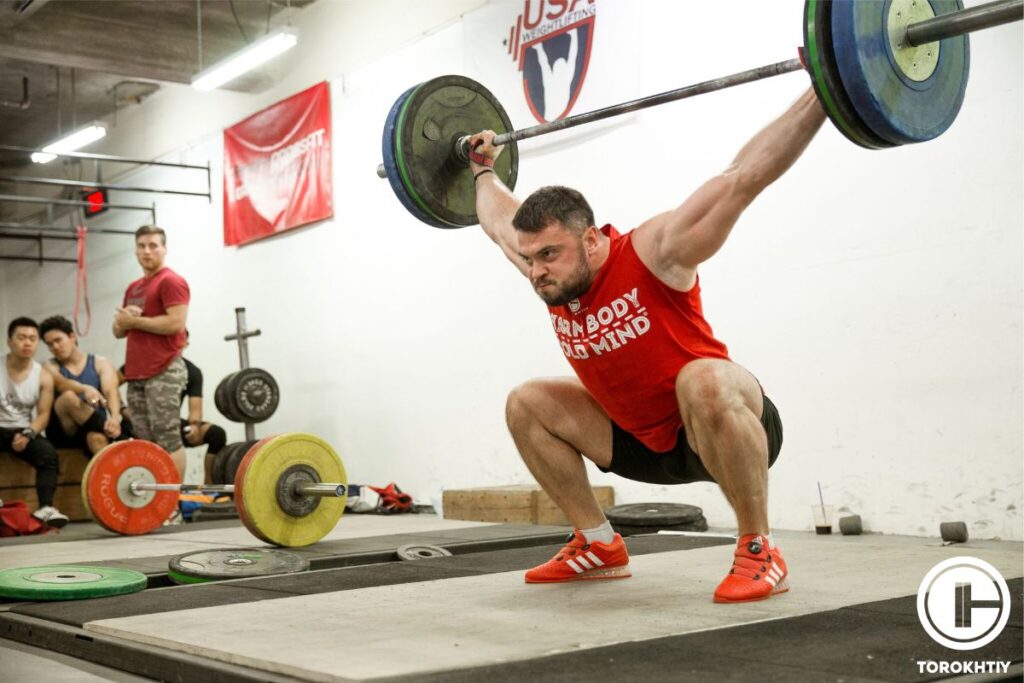
Weeks 9-12: Intensity Increase
- Frequency: squat twice a week with one light day and one heavy day.
- Volume: on heavy days – 5 sets of 4-6 reps: on light days 3 sets of 8-10 reps. Introduce paused squats to build power out of the bottom of squats.
- Accessory exercises: Weighted step ups and leg extensions.
- Intensity management: Heavy days should be challenging, approaching 75-85% of current 1 RM.
- Milestone: develop the ability to handle 85% of your estimated 1RM for multiple sets.
Training Day Example
- Heavy squats: 5 sets of 4-6 reps at 75-85% of 1RM.
- Paused squats: 3 sets of 5 reps with 2-second pause at the bottom.
- Weighted step-ups: 3 sets of 10 reps per leg.
- Leg extensions: 3 sets of 12 reps.
Weeks 13-16: Peaking
- Frequency: squat twice a week with one light day and one day for speed work.
- Volume: 3 sets five sets of 23 reps at 85-95% of your 1RM on heavy days, speed work should be 8 sets of 3 reps at 50-60% of year 1RM, focusing on explosive movement.
- Add overhead squats to improve stability and core strength.
- Accessory exercises: good mornings and core work like planks.
- Intensity management: manage fatigue carefully, ensuring adequate recovery between heavy sets.
- Milestone: try to hit a new PR heat in your squad aiming for 90-95% of your goal weight of 315 lbs.
Training Day Example
- Squat: 5 sets of 2-3 reps at 85-95% of 1RM.
- Overhead squats: 3 sets of 5 reps to work in stability.
- Good mornings: 3 sets of 8 reps.
- Reverse plank: 3 sets for one minute each.
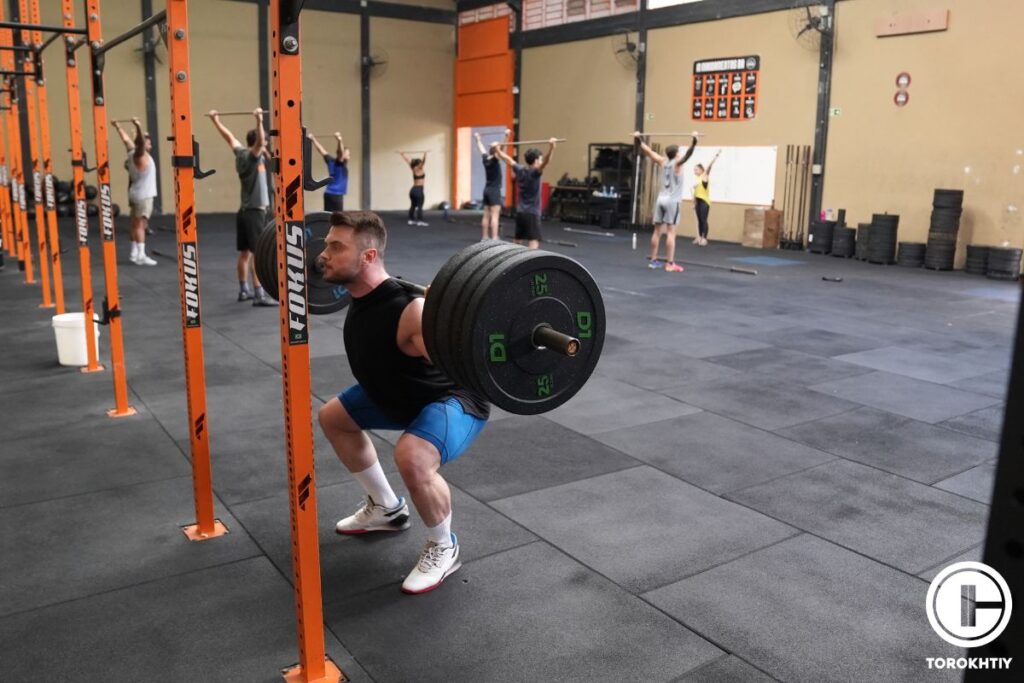
Week 17-20: Deload and Testing
- Frequency: Perform squats just once a week.
- Volume: Reduce to 2-3 sets of 5 reps at 60-70% of 1RM.
- Maintain light deadlifts and presses to keep muscles toned.
- Accessory exercises: focus on recovery & mobility exercises.
- Intensity management: Reduce overall intensity to allow the body to recover and supercompensate.
- Milestone: plan PR session and attempt to squat 315 lbs with proper form.
Training Day Example
- Squat: 2 sets of 5 reps at 60-70% of 1RM.
- Deadlifts: 2 sets of 5 reps at lightweight for form.
- Mobility work: Focus on hips and lower back
- Recovery: Use foam rolling and deep stretching.
Remember, this plan is a guideline and should be adjusted based on individual progress and recovery needs.
FAQ
What Percent Of Men Can Squat 315 Lbs?
There are no definitive statistics for how many people can squat 315 lbs as this is widely based on factors like training experience, body weight and individual commitment to strength training. However, within dedicated training, it’s a notable achievement that many intermediate lifters can reach.
Is 300 lbs Squat Impressive?
Yes, a 300 pounds squat is impressive for most gym goers, representing a significant milestone in strength. It typically signifies dedication to training and the level of strength that exceeds the average, especially if the lifter maintains technique and good form.
Conclusion
Squatting 315 pounds is a solid strength achievement that reflects serious commitment and structured training plan. If you are inspired to take on this challenge or have questions about your journey, reach out – we are here to support your fitness goals every step on the way.
Also Read:
- How To Squat 405 lbs: Is It a Good Result?
- Is a 225 lbs Squat Good?
- How Much Does A Squat Bar Weigh? Standards Explained
- Ideal Squat Bar Path Explained By Lifting Coach
- Squat Foot Placement: Proper Foot Position Explained
Referenses:
- Cotter JA, Chaudhari AM, Jamison ST, Devor ST. Knee joint kinetics in relation to commonly prescribed squat loads and depths. J Strength Cond Res. 2013 Jul;27(7):1765-74. doi: 10.1519/JSC.0b013e3182773319. PMID: 23085977; PMCID: PMC4064719.
- Kojic F, Ðurić S, Ranisavljev I, Stojiljkovic S, Ilic V. Quadriceps femoris cross-sectional area and specific leg strength: relationship between different muscles and squat variations. PeerJ. 2021 Nov 26;9:e12435. doi: 10.7717/peerj.12435. PMID: 34900415; PMCID: PMC8628634.
- Sjöberg M, Berg HE, Norrbrand L, Andersen MS, Gutierrez-Farewik EM, Sundblad P, Eiken O. Comparison of Joint and Muscle Biomechanics in Maximal Flywheel Squat and Leg Press. Front Sports Act Living. 2021 Aug 5;3:686335. doi: 10.3389/fspor.2021.686335. PMID: 34423289; PMCID: PMC8374053.
- Mackey ER, Riemann BL. Biomechanical Differences Between the Bulgarian Split-Squat and Back Squat. Int J Exerc Sci. 2021 Apr 1;14(1):533-543. PMID: 34055144; PMCID: PMC8136570.
- Martínez-Cava A, Hernández-Belmonte A, Courel-Ibáñez J, Conesa-Ros E, Morán-Navarro R, Pallarés JG. Effect of Pause Versus Rebound Techniques on Neuromuscular and Functional Performance After a Prolonged Velocity-Based Training. Int J Sports Physiol Perform. 2021 Jul 1;16(7):927-933. doi: 10.1123/ijspp.2020-0348. Epub 2021 Feb 9. PMID: 33561819.
Why Trust Us?
With over 20 years in Olympic weightlifting, strength training, nutrition coaching, and general fitness our team does its best to provide the audience with ultimate support and meet the needs and requirements of advanced athletes and professional lifters, as well as people who strive to open new opportunities and develop their physical capabilities with us.
By trusting the recommendations of our certified experts in coaching, nutrition, and sports training programming, as well as scientific consultants, and physiotherapists, we provide you with thorough, well-considered, and scientifically proven content. All the information given in the articles concerning workout programming, separate exercises, and athletic performance, in general, is based on verified data.
The product testing process is described in more detail here.
Author: Sergii Putsov
Head of Sport Science, PhD
Best Results: Snatch – 165 kg,
C&J – 200 kg
Sergii Putsov, Ph.D., is a former professional weightlifter and National team member, achieving multiple medals in the 94 kg weight category at national competitions. With a Master’s degree in “Olympic & Professional Sport Training” and a Sport Science Ph.D. from the International Olympic Academy, Greece, Sergii now leads as the Head of Sport Science. He specializes in designing training programs, writing insightful blog articles, providing live commentary at international weightlifting events, and conducting educational seminars worldwide alongside Olympic weightlifting expert Oleksiy Torokhtiy.
Reviewed by: Oleksiy Torokhtiy
Olympic Weightlifting Champion, PhD in Sport Science
Best Results: Snatch – 200 kg,
C&J – 240 kg
Oleksiy Torokhtiy is a professional athlete boasting 20 years of experience in Olympic weightlifting. With multiple European and World titles under his belt, he has showcased his prowess in two Olympic Games (Beijing 2008 and London 2012). Upon concluding his illustrious career, Oleksiy dedicated himself to coaching. By 2022, he had conducted over 200 weightlifting seminars worldwide. He is the visionary behind an international sportswear and accessories brand known for its motto, “Warm Body Cold Mind.” Additionally, he is an esteemed author and the creator of a series of training programs and eBooks.




Still have questions after reading our article? Unlock your full potential by engaging with our experts and community! Don’t hesitate — leave a comment below and Sergii Putsov will provide a personalized answer and insights to help you reach your goals.